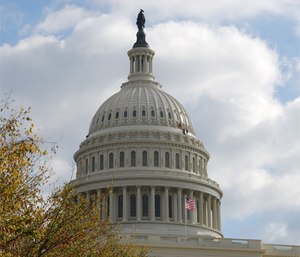
While not specifically seeking to eliminate or reduce grant funding, the president's budget is not specific enough to rule out either
In March, the Trump administration released the president’s proposed 2018 federal budget. The document entitled, “Blueprint for Budget,” was only 60 pages long and in a unique format compared with past presidential budgets.
The 2018 proposed budget was presented in a narrative style format as opposed to the typical line-item presentation. As a result, it has become difficult in some cases to accurately determine whether or not a particular program is targeted for elimination.
It’s important to note that any president’s budget is simply a request. The final budget will be built and passed by Congress, and those often differ greatly from the president’s budget.
The preface to the document states that any amounts or programs not mentioned will revert to the 2016 budget number for that program.
In the document, there is no specific reference to the Assistance to Firefighters Grant Program or SAFER or FP&S. One would assume then that those programs will continue to be funded under the proposed budget.
However, those three grant programs normally fall under FEMA ’s State and Local Programs line item. The 2018 Blueprint for Budget page 24 contains the following:
"Eliminates or reduces State and local grant funding by $667 million for programs administered by the Federal Emergency Management Agency (FEMA) that are either unauthorized by the Congress, such as FEMA’s Pre-Disaster Mitigation Grant Program, or that must provide more measurable results and ensure the Federal Government is not supplanting other stakeholders’ responsibilities, such as the Homeland Security Grant Program. For that reason, the Budget also proposes establishing a 25 percent non-Federal cost match for FEMA preparedness grant awards that currently require no cost match. This is the same cost-sharing approach as FEMA’s disaster recovery grants. The activities and acquisitions funded through these grant programs are primarily State and local functions."
To try to clarify this item, I reached out to FEMA and asked if this paragraph was referencing the elimination of the fire grants programs. In response, a spokesperson for FEMA stated:
“The Administration is still finalizing the details of the fiscal year 2018 President’s Budget, including the final funding amounts for each specific grant program. While recognizing this blueprint is not the full federal budget, it does provide a view of the priorities of the President and his Administration. In today’s fiscal environment, FEMA remains committed to a continued review of FEMA programs with a concentration on efficiency and effectiveness while maximizing each dollar invested.”
There was a collective sigh of relief when the fire grant programs were not specifically mentioned in the 2018 proposed budget. However, the narrative on page 24 of the document and the answer provided by FEMA appear to leave the door open to elimination or alteration of the programs.
Other programs used by some departments for apparatus and equipment purchases and for station construction or renovation are clearly marked for elimination. These include the Community Development Block Grant program under HUD and the Community Facilities program under USDA .
Not only have communities used these two programs to directly benefit fire and EMS agencies, they have also used them for related services. In particular, the Community Facilities program has been used to bring water service into hundreds of rural communities helping to lower residential insurance rates and to provide fire departments with a reliable source of water for battling structure fires.
Because of this, I am urging you to speak with your United States representative and senators about the importance of these programs to local communities, the nation’s security and the economic stability of our country.
Not only do these programs assist local fire departments to purchase apparatus and equipment, but they also help create and retain jobs for the fire service manufacturers and their vendors – and they ensure the efficient delivery of goods and services throughout this nation.
I realize there are those in Washington who believe that funding for fire and EMS agencies is a local concern and not the business of the federal government. That may have been the case 150 years ago, but that argument doesn’t hold water any more.
If you want to follow that line of teaching, then take your highways, railroads, waterways, pipelines, communications towers and interstate traffic out of my coverage area. Once you do that, then I will agree that fire protection is only a local issue.
Copyright © 2025 FireGrantsHelp.com. All rights reserved.
